One of the most desired vintage double hose dive regulator I was looking for since 2012, when I started this hobby, without success so far, has been the Siebe Gorman EssJee Aqualung MK I, probably the very first modern Scuba regulator ever made in UK after the Cousteau-Gagnan CG-45 regulator model introduction on the market in 1946. From the very few information I found in the available historical diving gear literature and websites, this model was manufactured by Siebe Gorman probably from 1953 to 1955 in few hundreds units only. A similar story was experienced also by its successor, the Siebe Gorman EssGee Aqualung MK II, which remains in production from 1955 to 1956. These two models were soon hidden by the new coming star: the Mistral. In most part of the world the Mistral dive regulator became very quickly the only real reference point for anyone of the competition looking at this market for new business. For this reason, both the MK I and the MK II are considered very rare models by the vintage scuba gear collectors and in fact it is very difficult to find one of these units offered in international auctions.
Unexpectedly, some weeks ago a German collector offered to me a sample of a MK I (serial number 421) but unfortunately in a very incomplete condition (see Figure 1 and Figure 2).
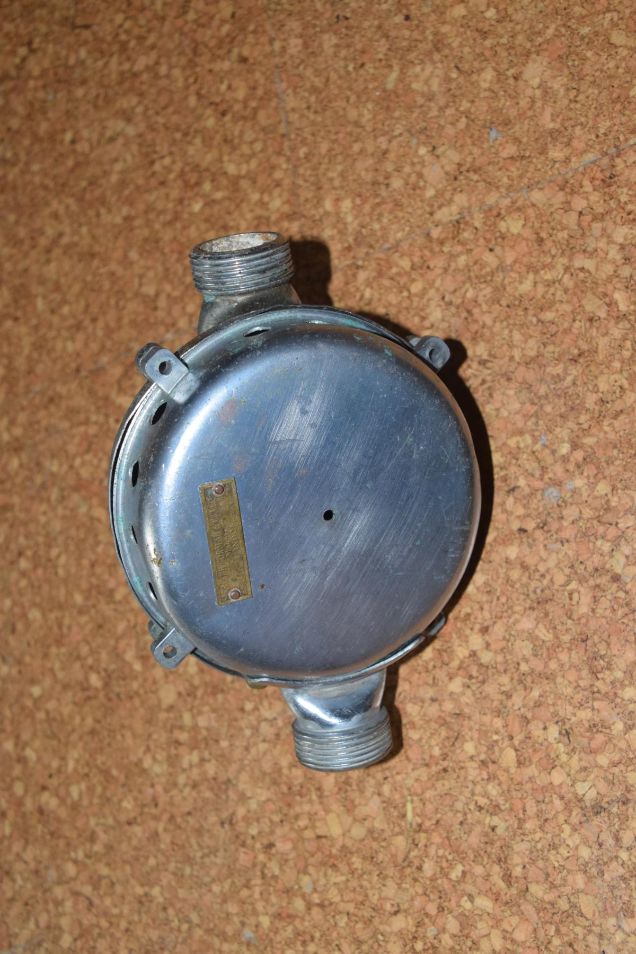 |
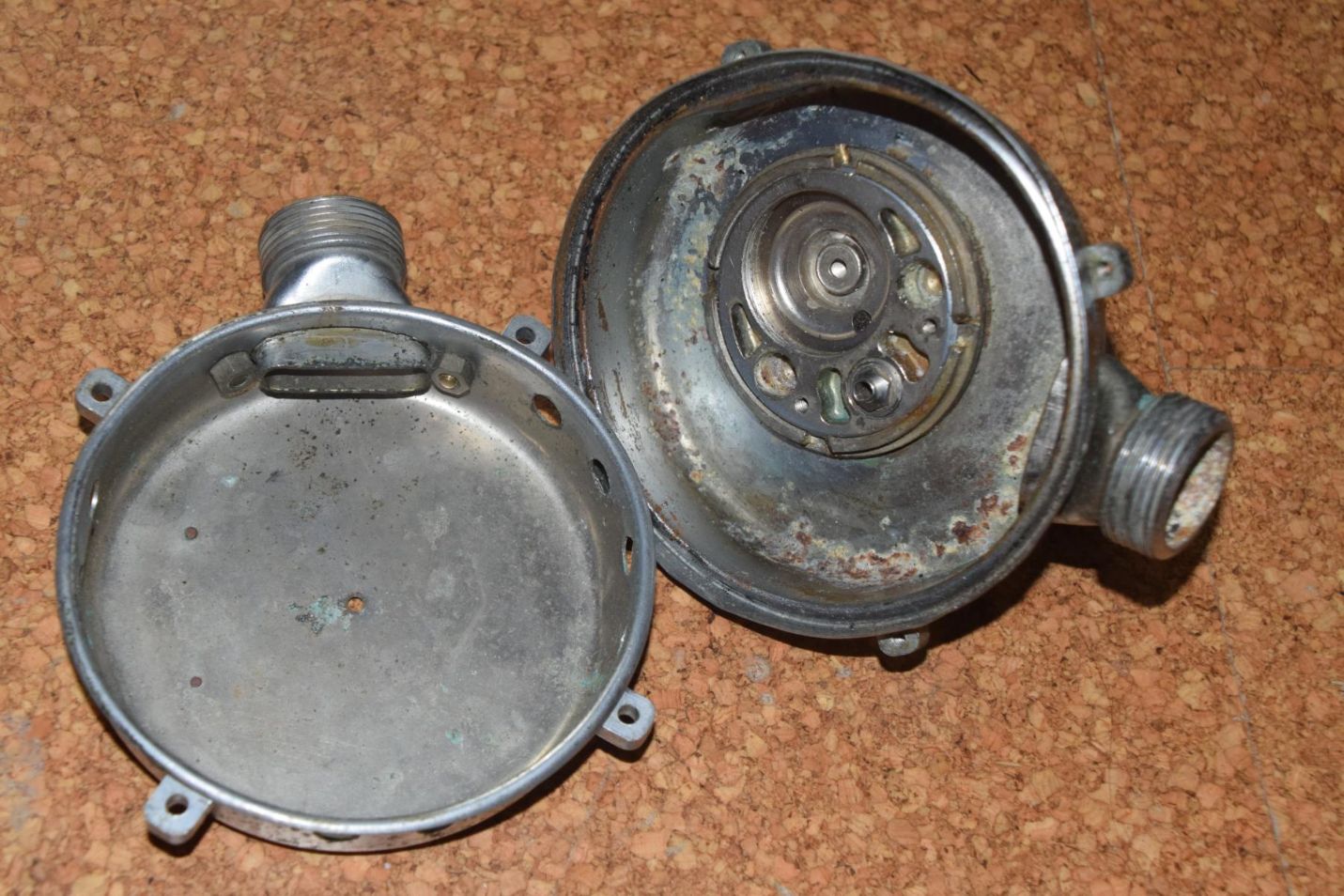 |
| Figure 1 |
Figure 2 |
Only the two metal shells of the regulator body were available without any parts both inside (diaphragm, first and second pressure reducing stages parts, exhaust duckbill valve) and outside (hoses, mouthpiece, 90° hose connecting elbows). Since this model was largely derived from the CG-45, except from some specific items which should have become typical of the Siebe Gorman regulators (i.e. the threaded 90 ° elbows linking the hoses to the regulator’s body, the four screws connecting the two body shells instead of the CG-45 seven clamps, the imperial vs metric sizes fasteners, etc.), I decided to ask some collectors in France who normally could have had these parts in their stocks.
These collectors have been known on the several social media groups specialized on these matters and existing all over the world. There are a lot of posts and forums in the net where a lot of information and data about historical diving industry and gear are available.
In this case I was pretty lucky and, apart the huge price I had to pay for them (literally their value is equivalent to the same weight in gold), I was capable to get original CG-45 parts. In particular, I got an original duckbill valve (of this valve several modern reproductions exist but none in the original CG-45 configuration, as far as I know), a riveted diaphragm sample (unfortunately with the rubber part completely carbonized), a second stage horseshoe lever with its special screws and springs, a metal “T” shaped mouthpiece with its rubber nozzle (see Figure 3, Figure 4, Figure 5, Figure 6, Figure 7 and Figure 8).
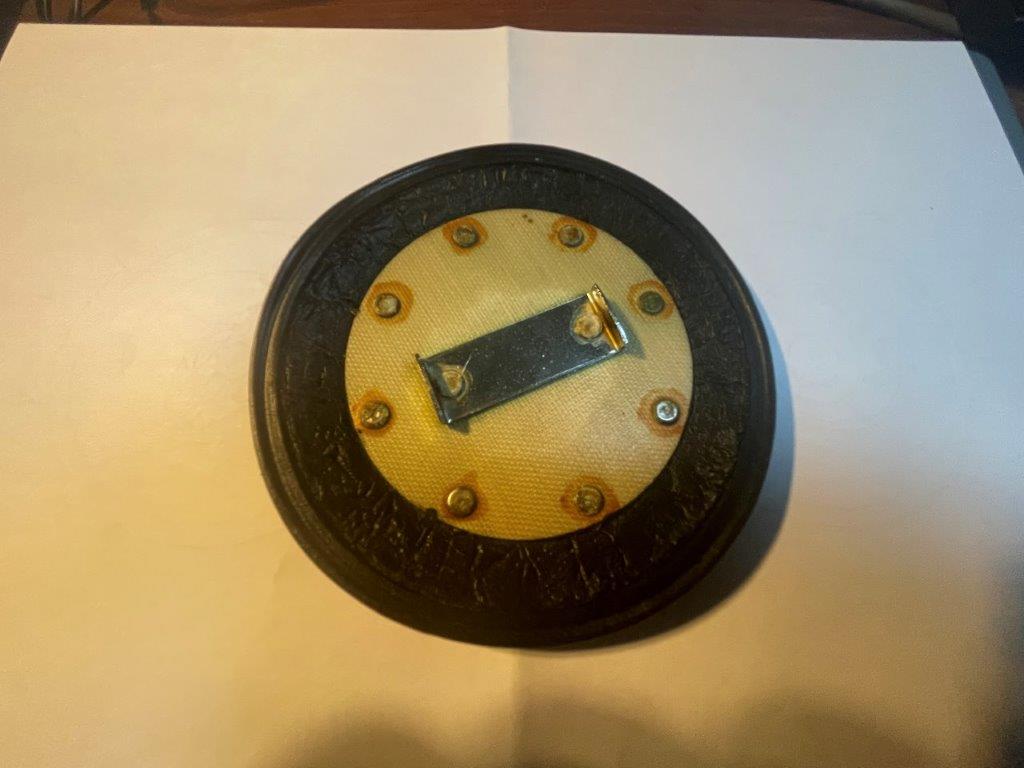 |
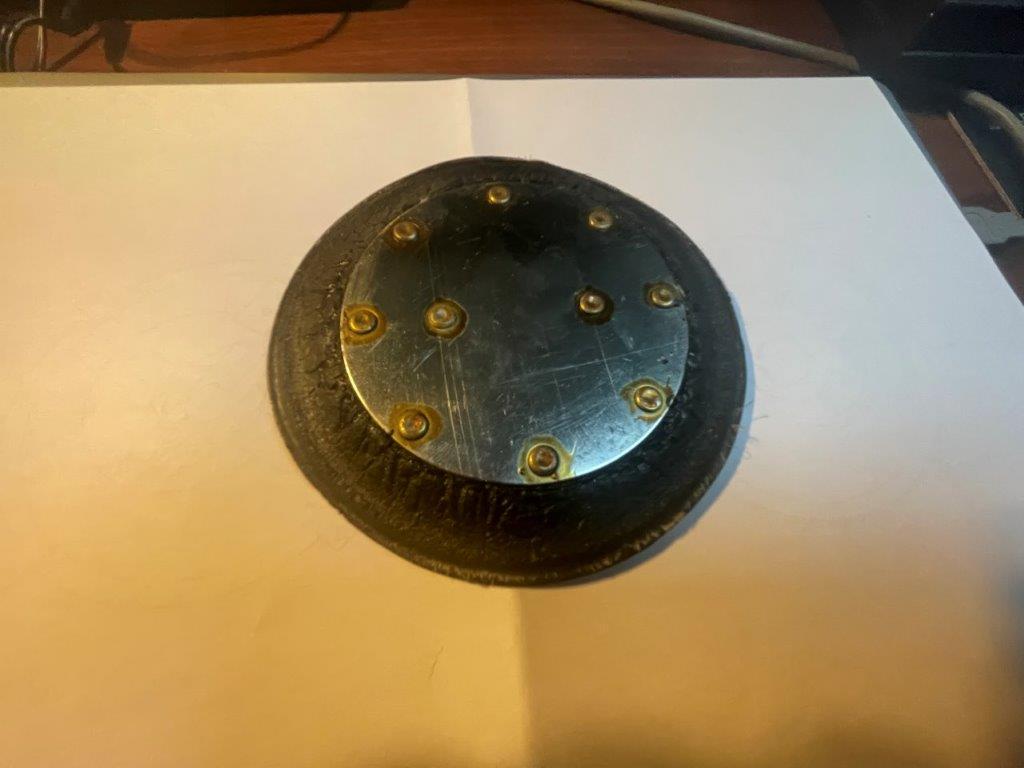 |
| Figure 3 |
Figure 4 |
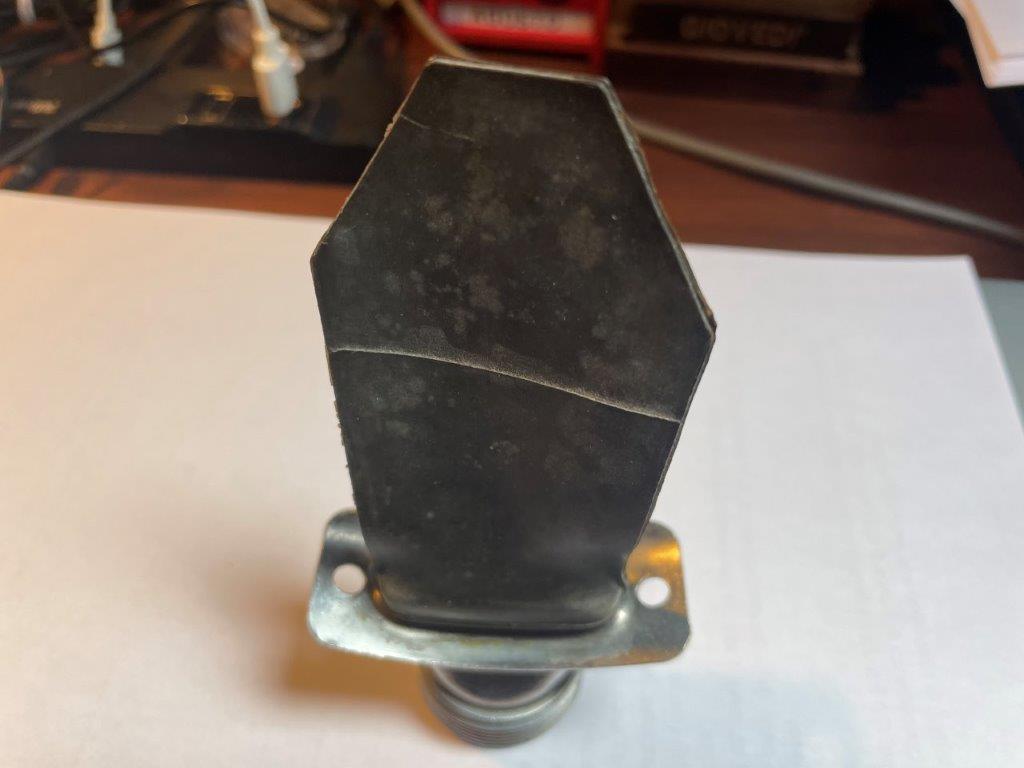 |
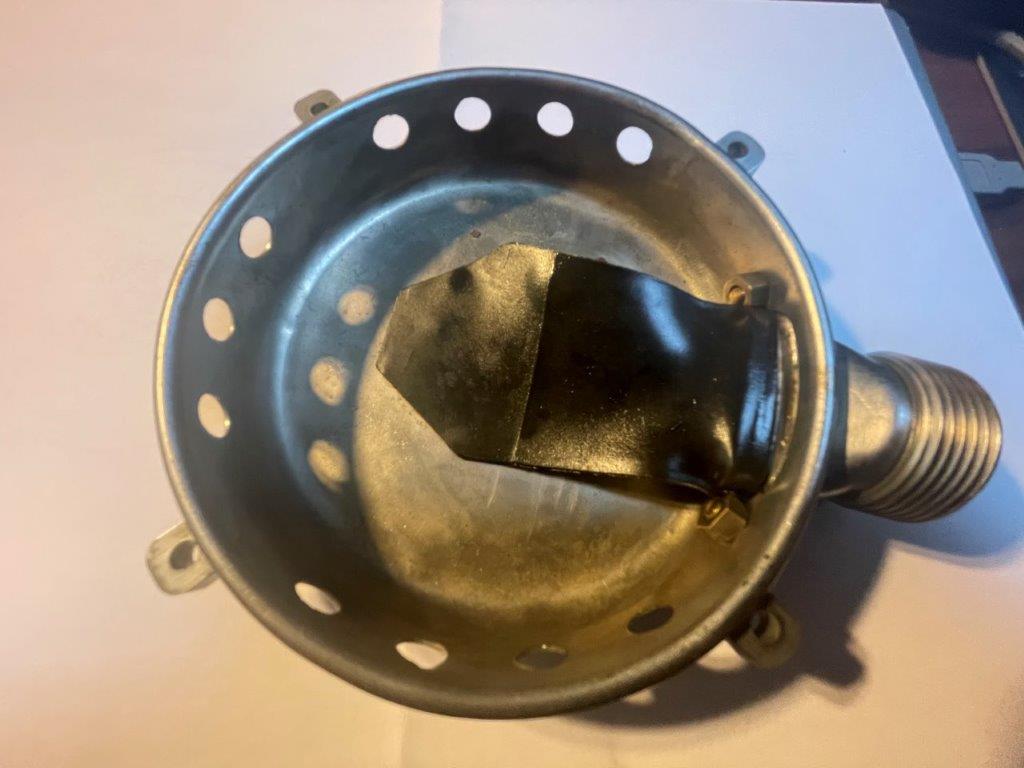 |
| Figure 5 |
Figure 6 |
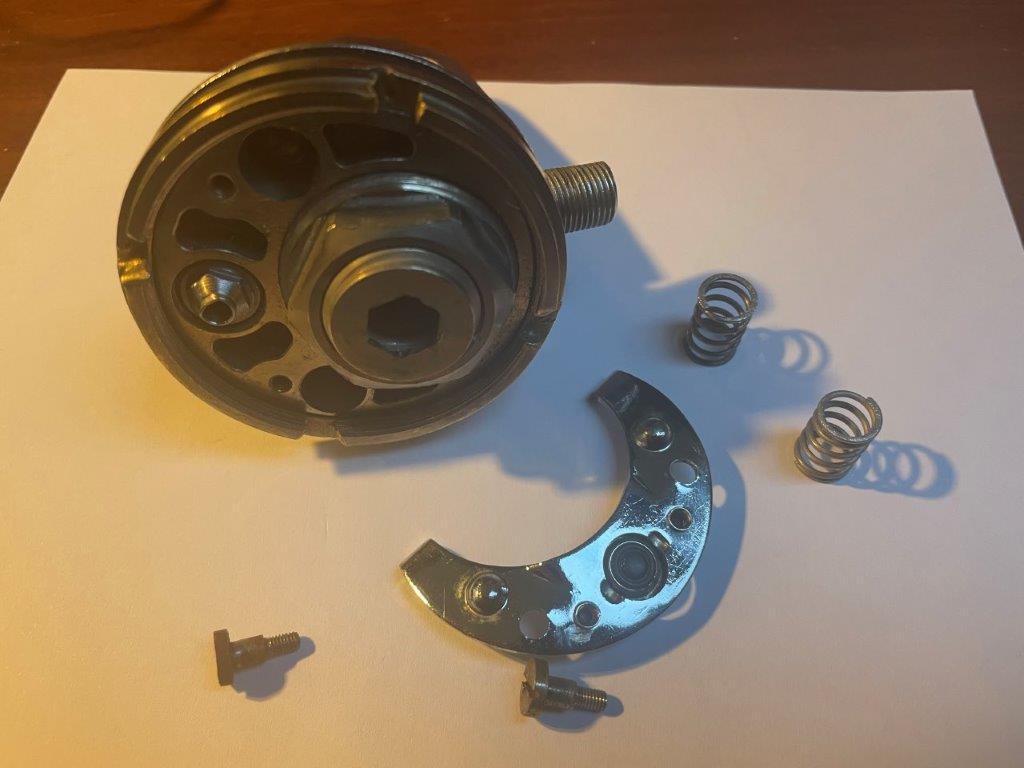 |
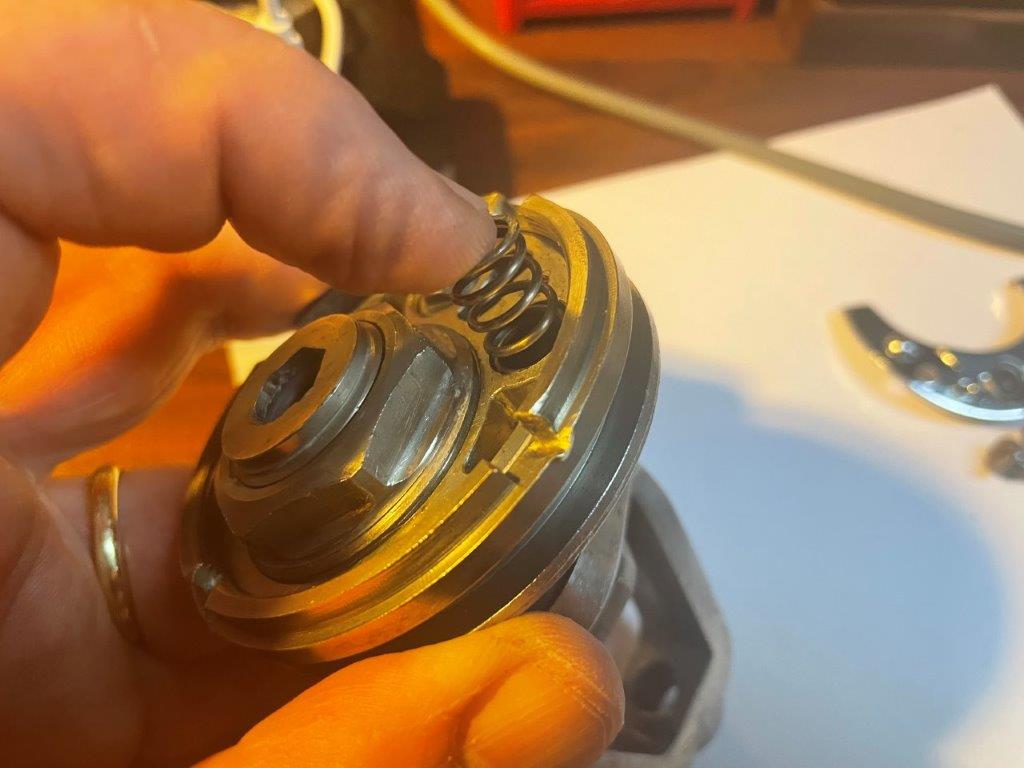 |
| Figure 7 |
Figure 8 |
The first stage internal parts have been taken from an U.S. Divers DA Aqua Master unit taken from my stock (see Figure 9 and Figure 10).
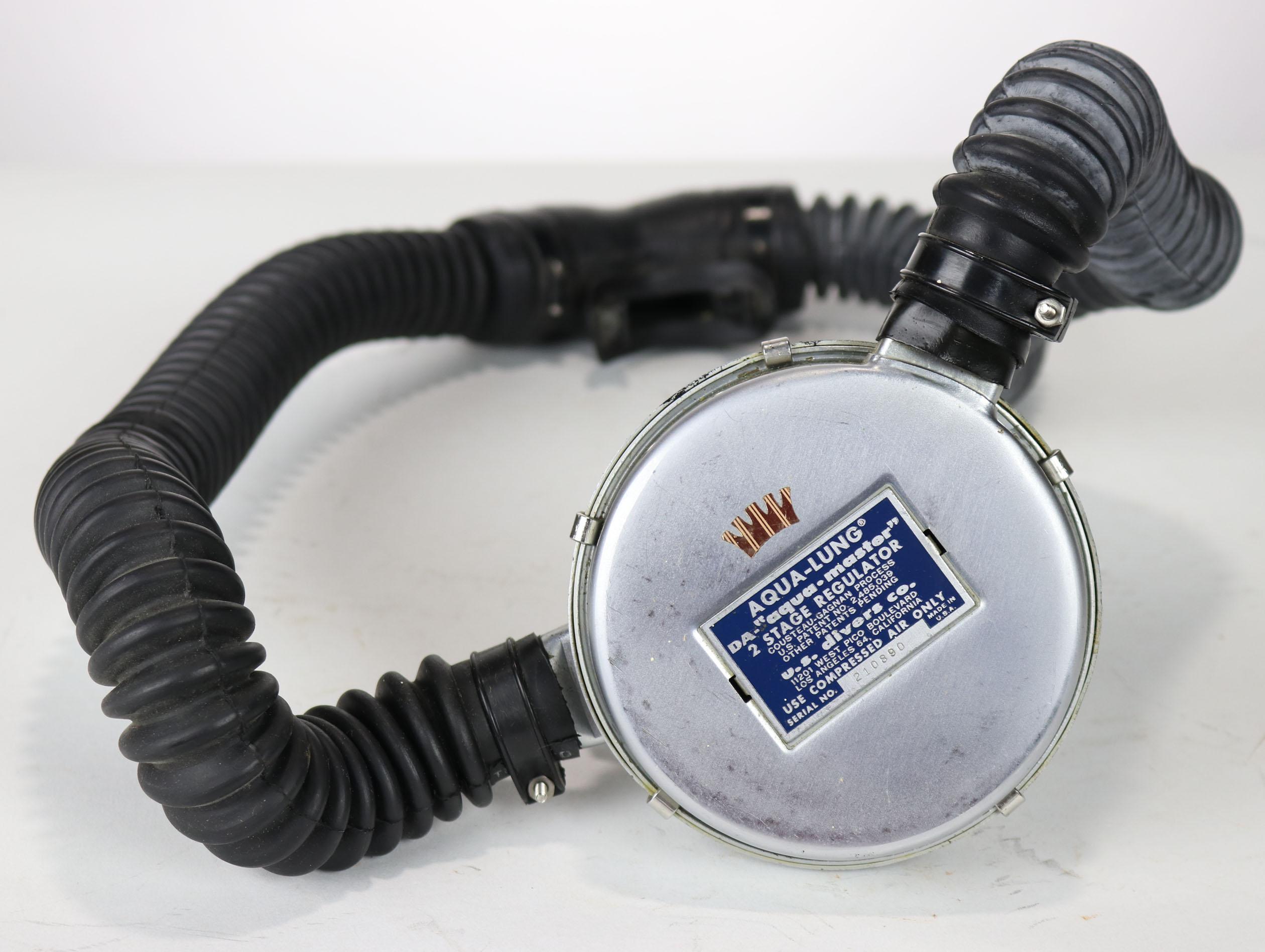 |
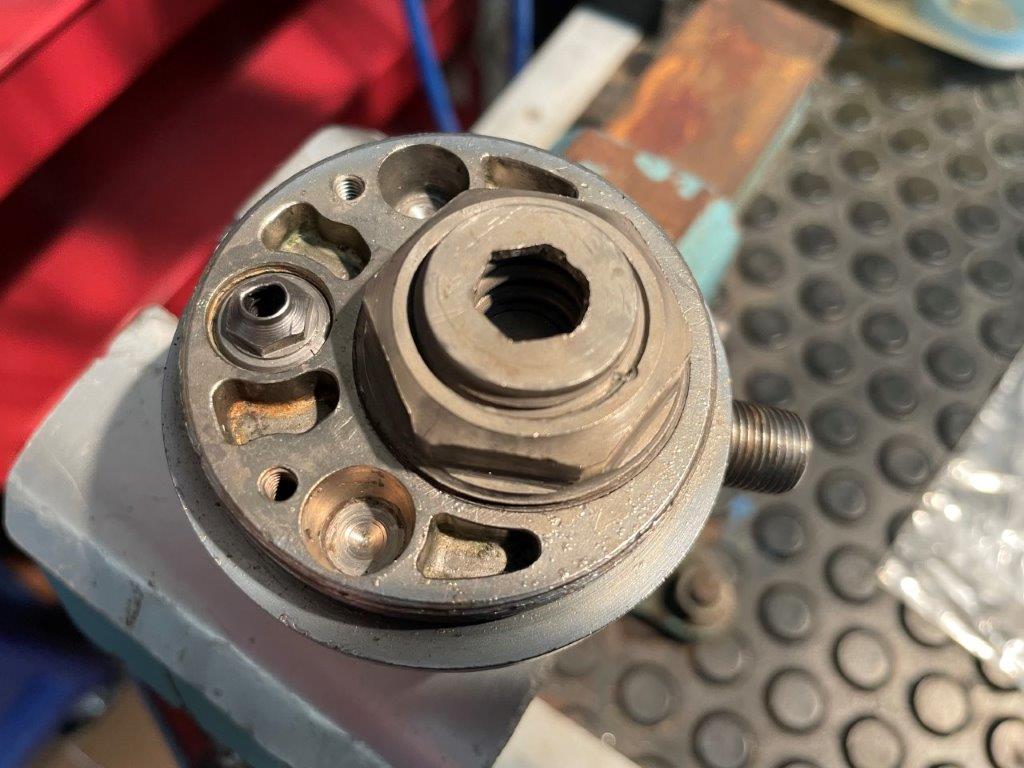 |
| Figure 9 |
Figure 10 |
The original rubber hoses used on this model were fabric protected with a khaki color. Very similar hoses having these characteristics (fabric protection and khaki color) were those used on a Russian AKA Podwodnik AVM-1 regulator I have in my stock (see Figure 11). I took these hoses from this Russian unit and the 90° elbows from a Siebe Gorman Mistral regulator having these same components (see Figure 12). Off course I will restore these “cannibalized” units as soon as I find these parts somewhere in the future.
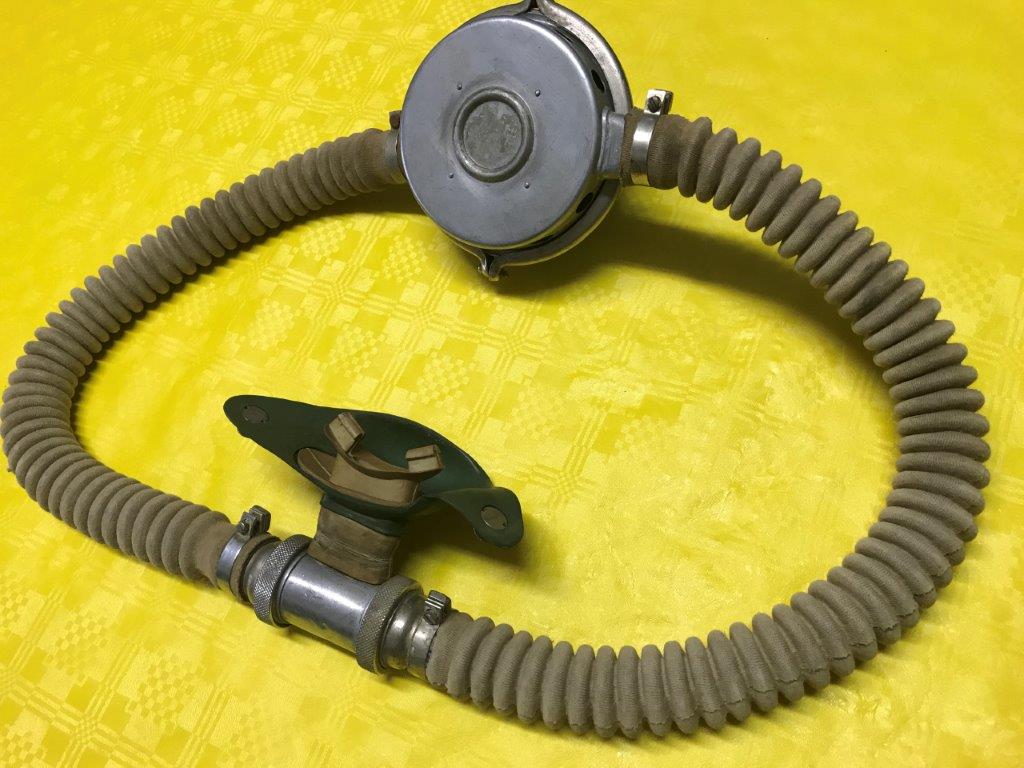 |
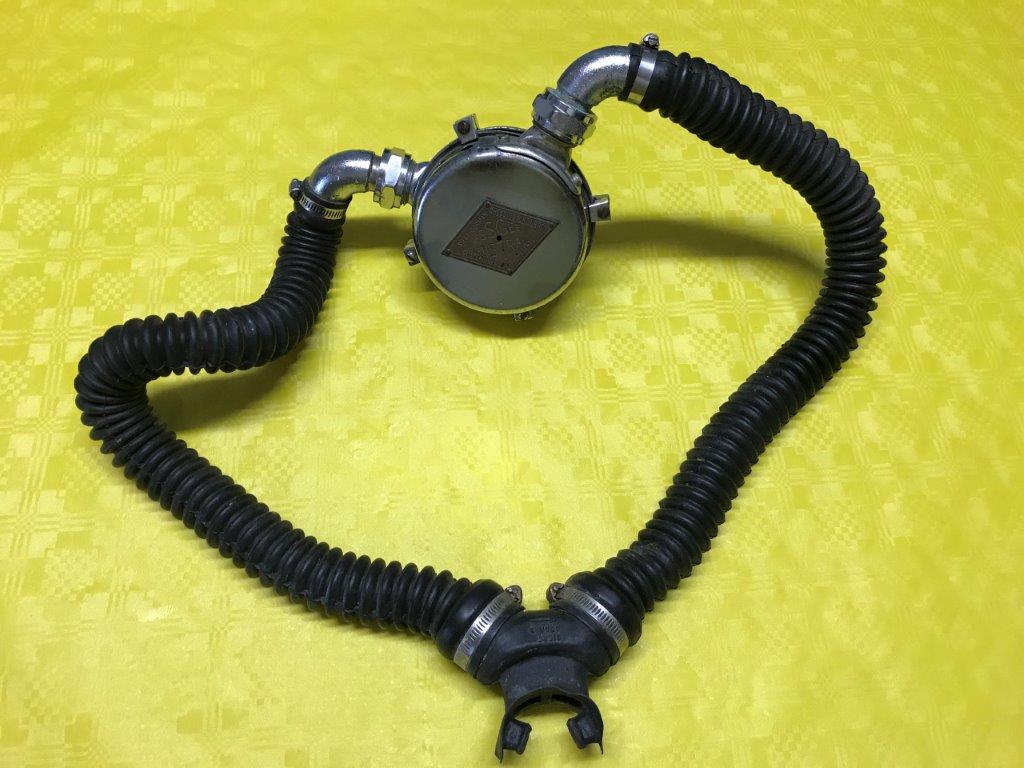 |
| Figure 11 |
Figure 12 |
In reinstalling the khaki hoses on the metal “T” shaped mouthpiece and on the 90° elbows, I tried to apply the same techniques I have seen on the available pictures and documentation related to these rare regulators. In particular, the hoses are tightened on the 90° elbows by copper wire wrapped around the hoses ends and twisted by pliers (see Figure 13 and Figure 14).
For the metal “T” shaped mouthpiece and its rubber nozzle, I have used fabric wire instead of copper, as observed on similar applications of that time (see Figure 15 and Figure 16). This latter tightening connection has been then protected by epoxy resin which contributes to the tightening action during its hardening phase (see Figure 17 and Figure 18). All these connections (copper and fabric wires) have been finally protected by self-vulcanizing rubber tape (see Figure 19 and Figure 20). This connection system was widely used for these components before better and more effective clamping systems were available (i.e. metal or plastic clamps with tightening screws). The 1/8 bsw screws to connect the two body shells together, coming from old hardware stocks (the imperial sizes hardware is not used anymore in Europe since several decades), have been found on eBay UK.
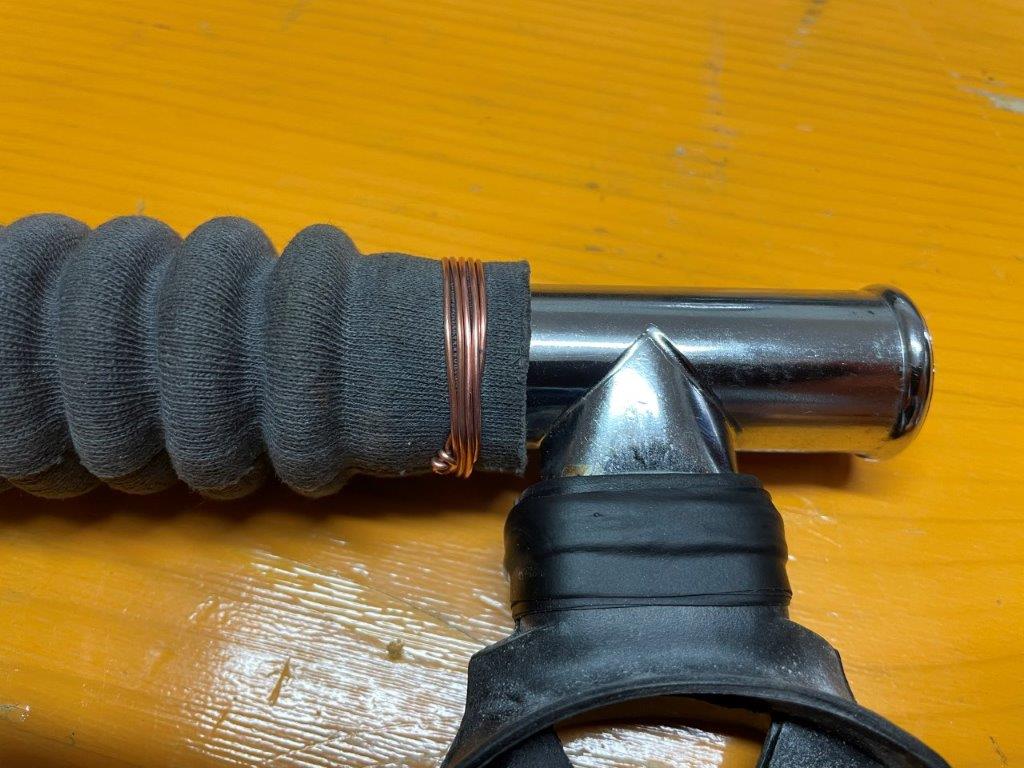 |
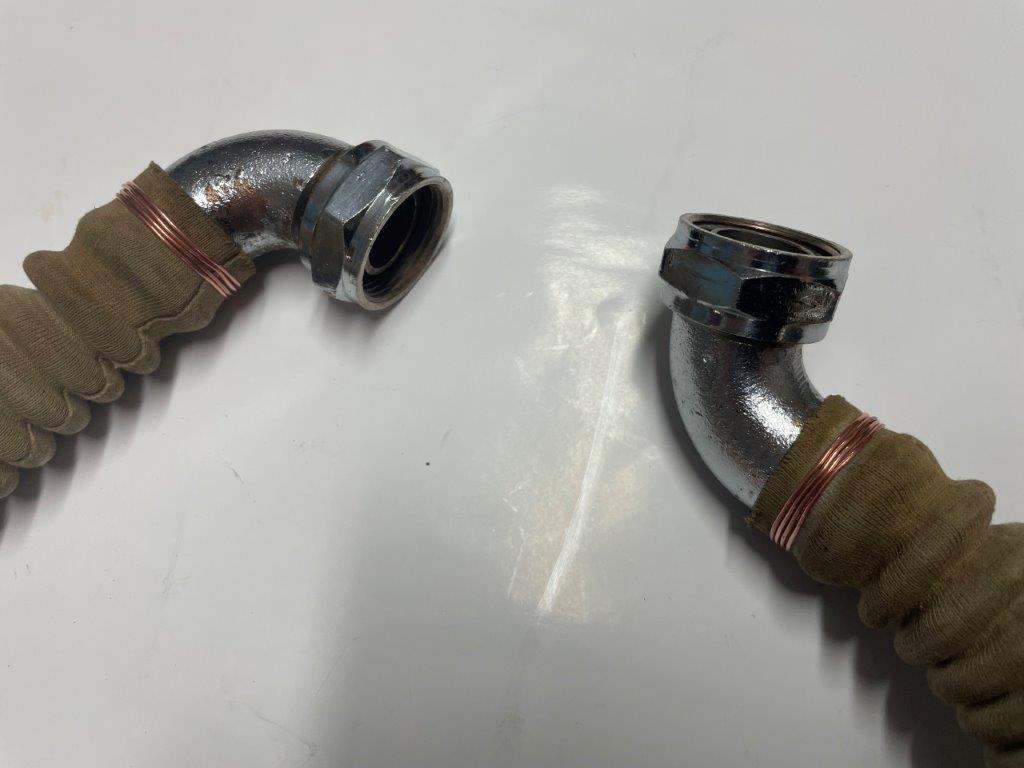 |
| Figure 13 |
Figure 14 |
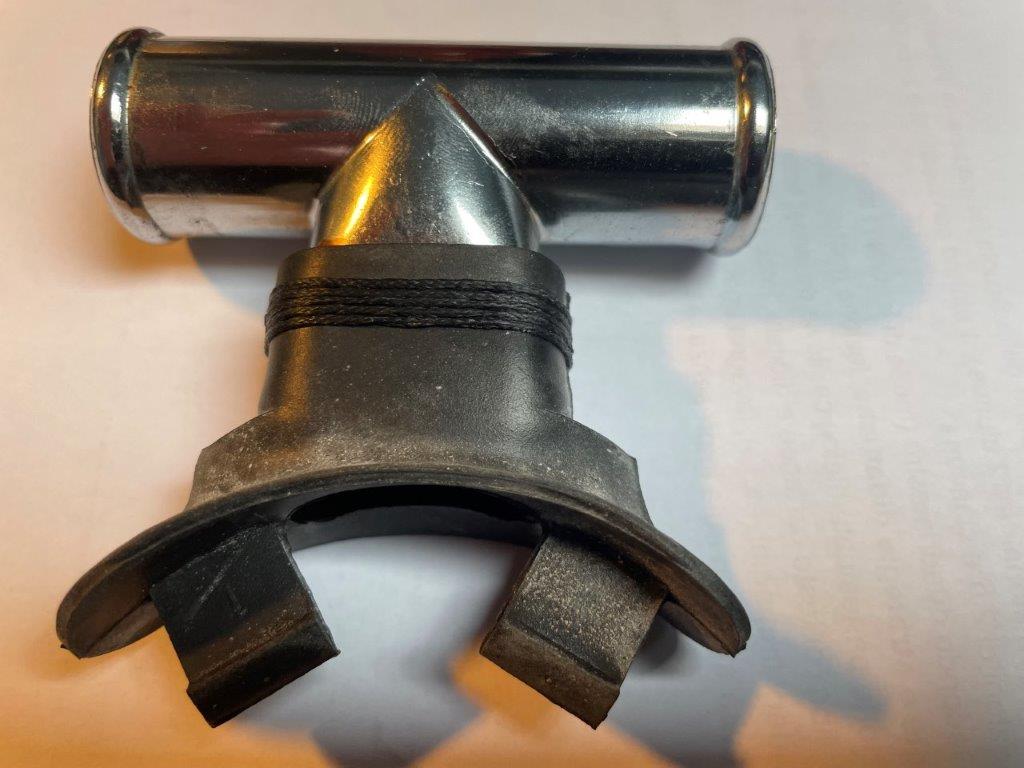 |
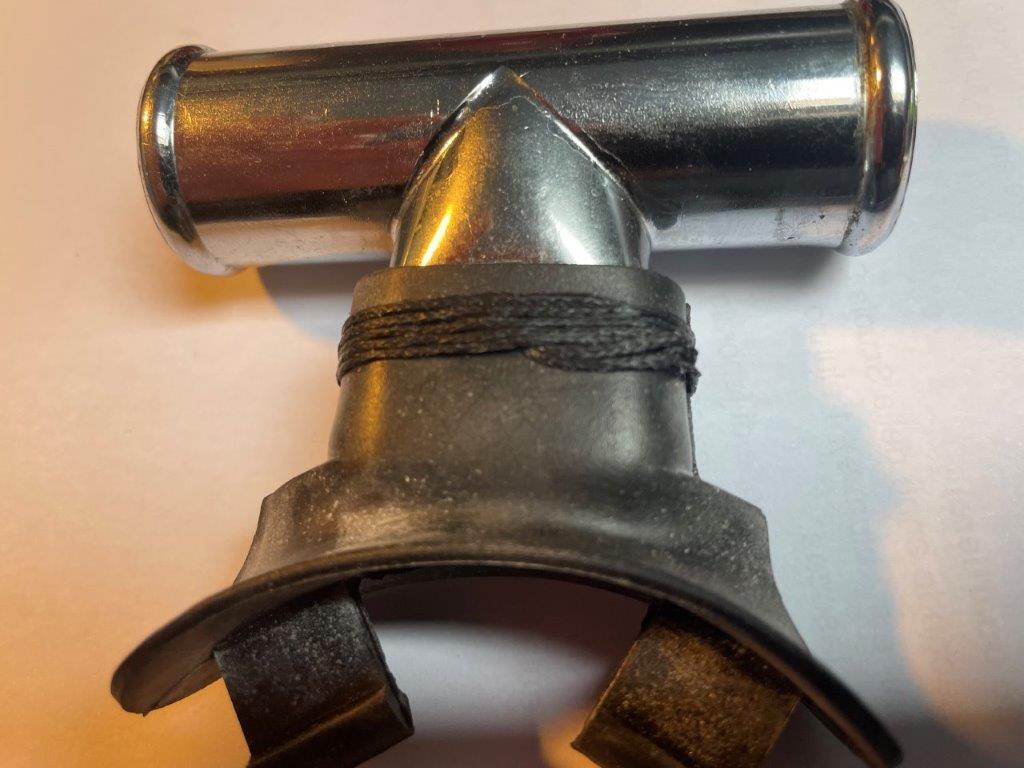 |
| Figure 15 |
Figure 16 |
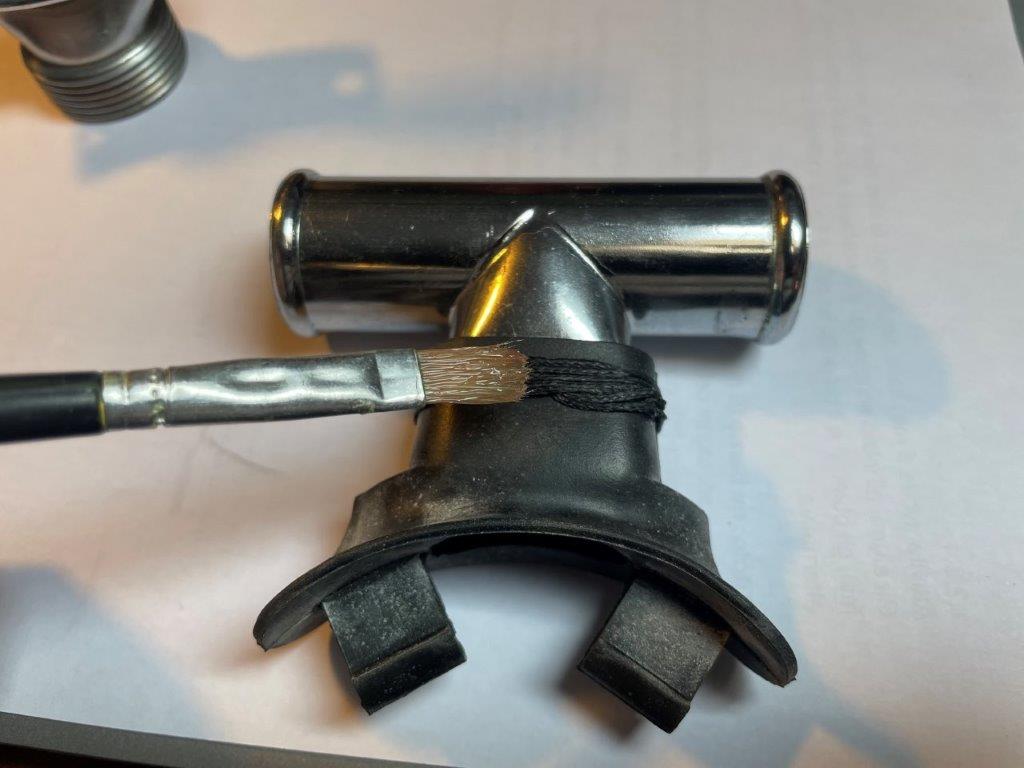 |
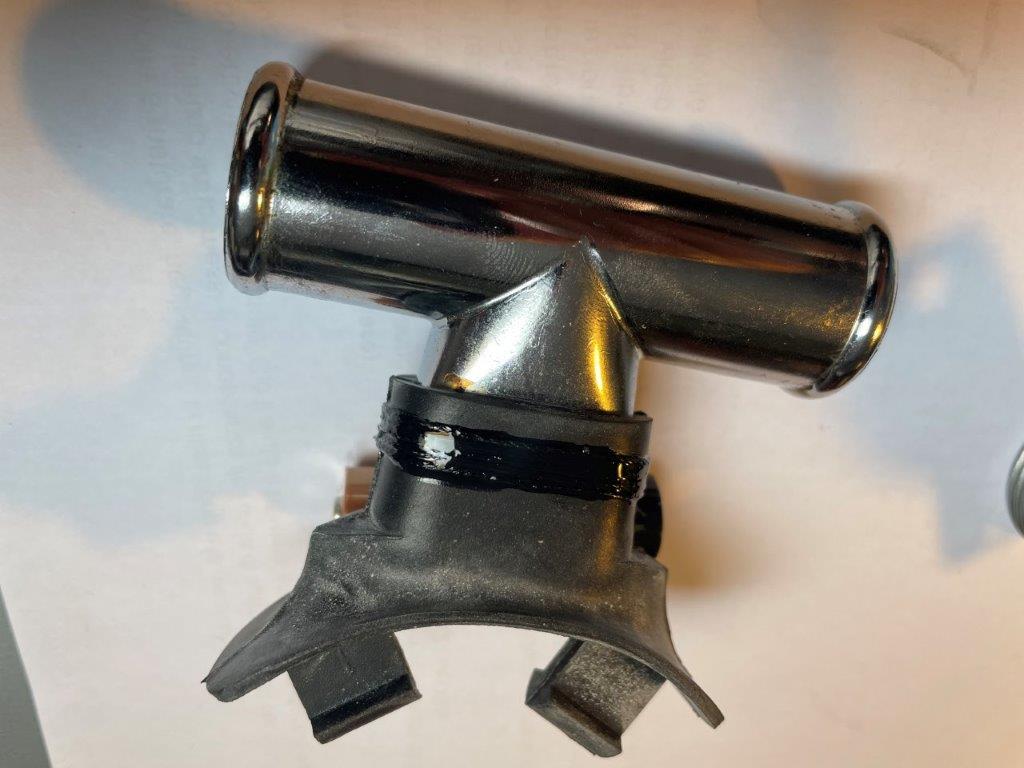 |
| Figure 17 |
Figure 18 |
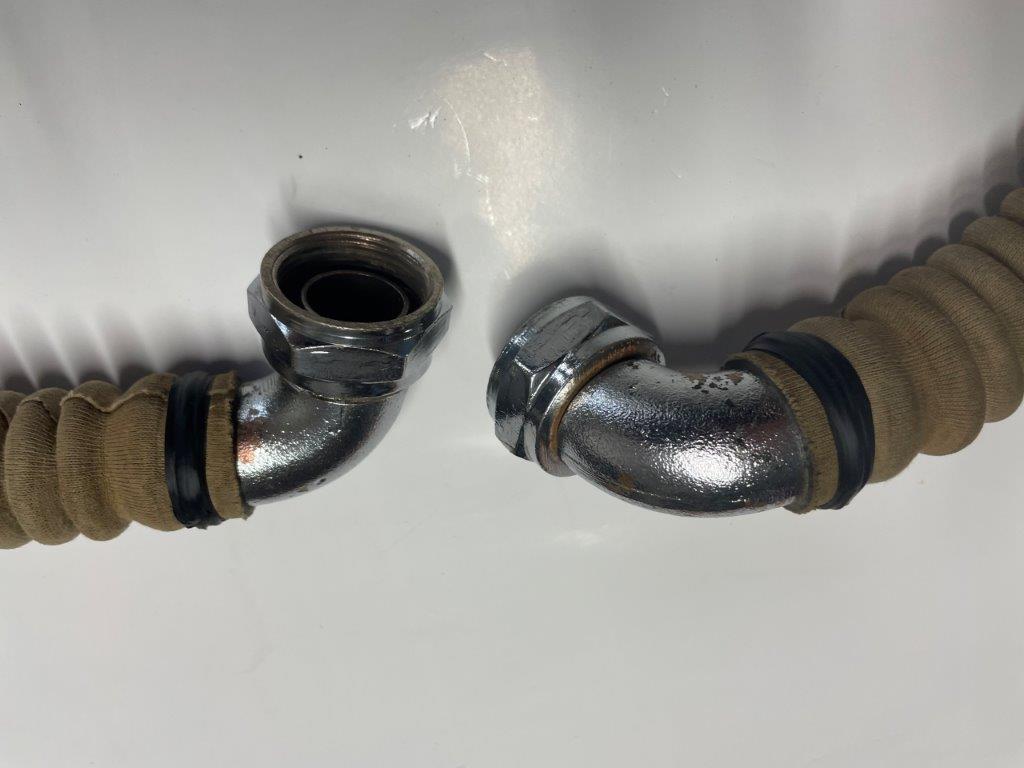 |
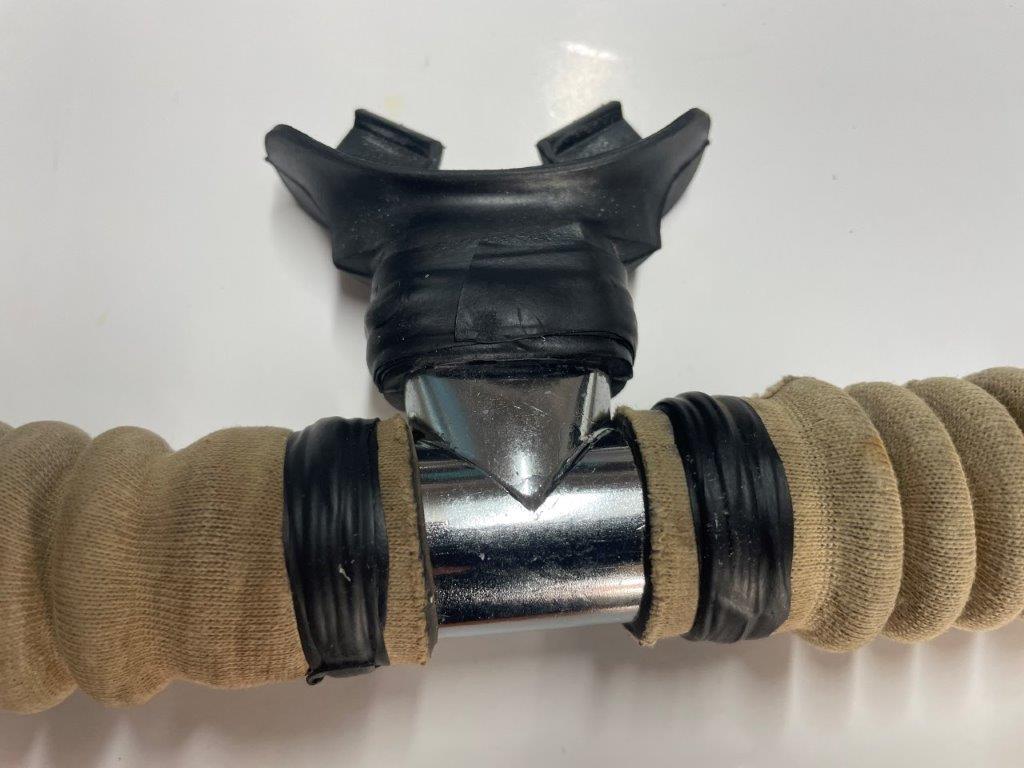 |
| Figure 19 |
Figure 20 |
And finally, I have completed the rebuilt of this very rare regulator (see Figure 21, Figure 22, Figure 23, Figure 24, Figure 25, Figure 26, Figure 27, Figure 28, Figure 29 and Figure 30). Hope this can help anybody of the vintage scuba gear collectors community having similar issues in rebuilding these rare jewels of our beloved sport pioneering phase.
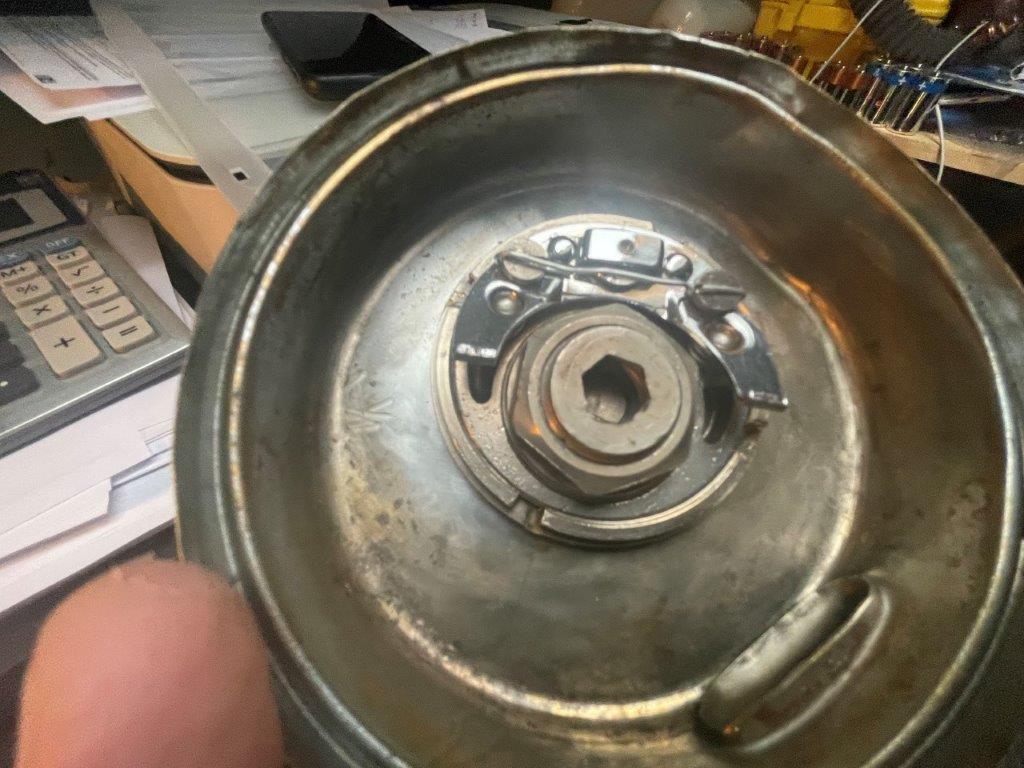 |
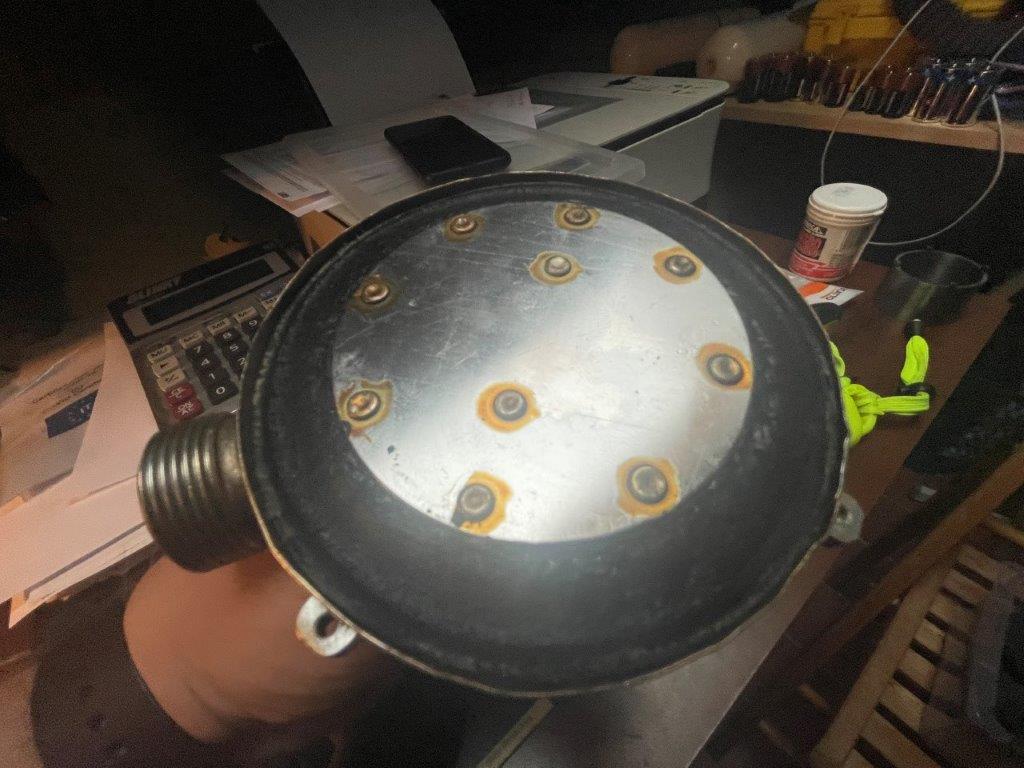 |
| Figure 21 |
Figure 22 |
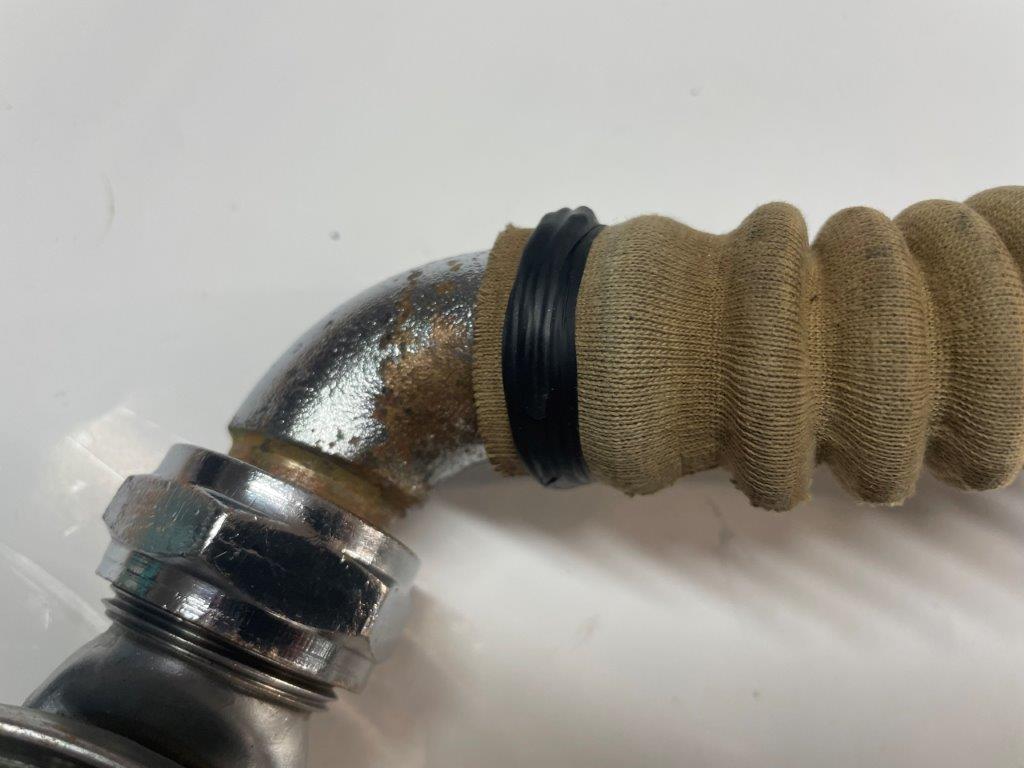 |
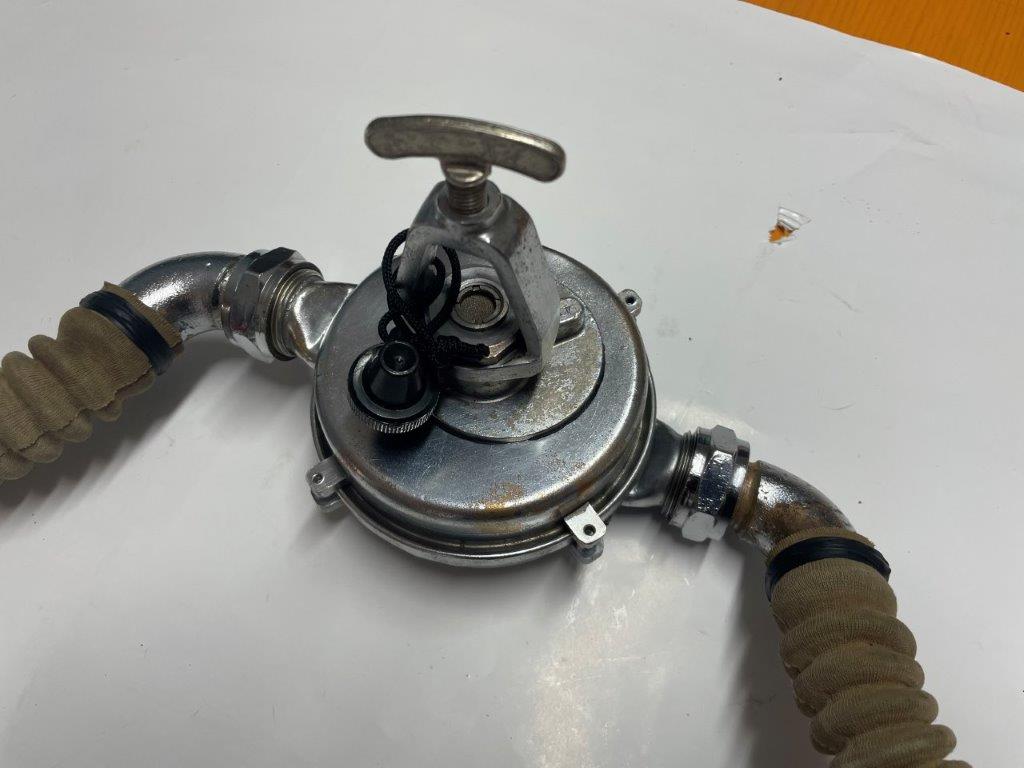 |
| Figure 23 |
Figure 24 |
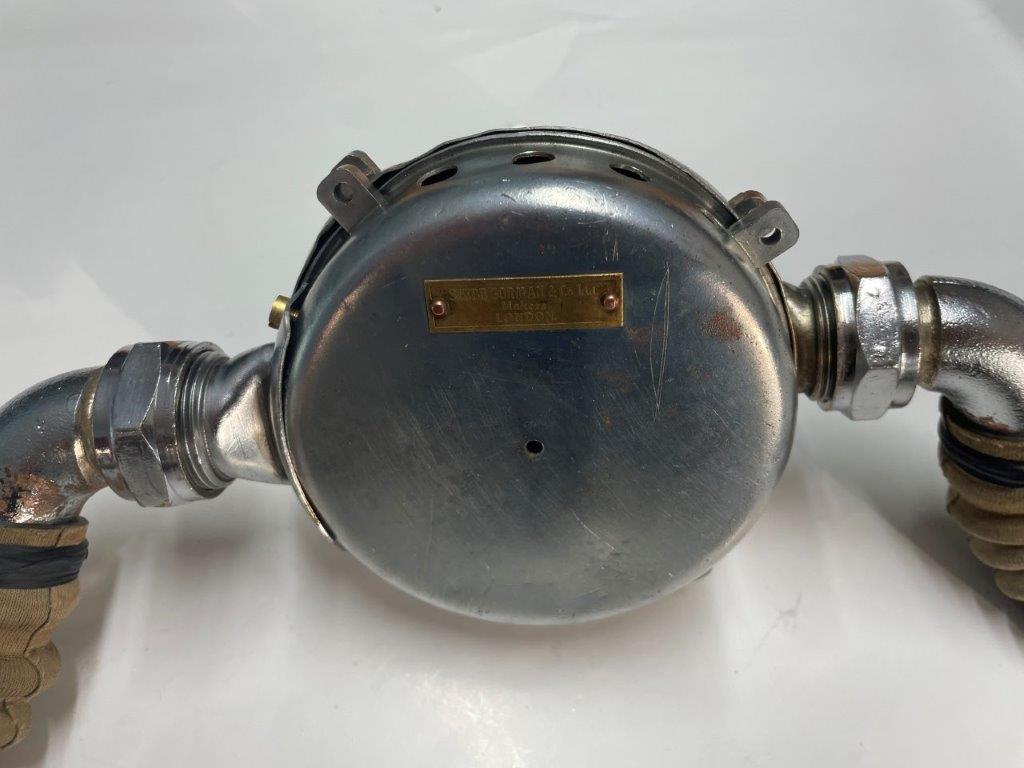 |
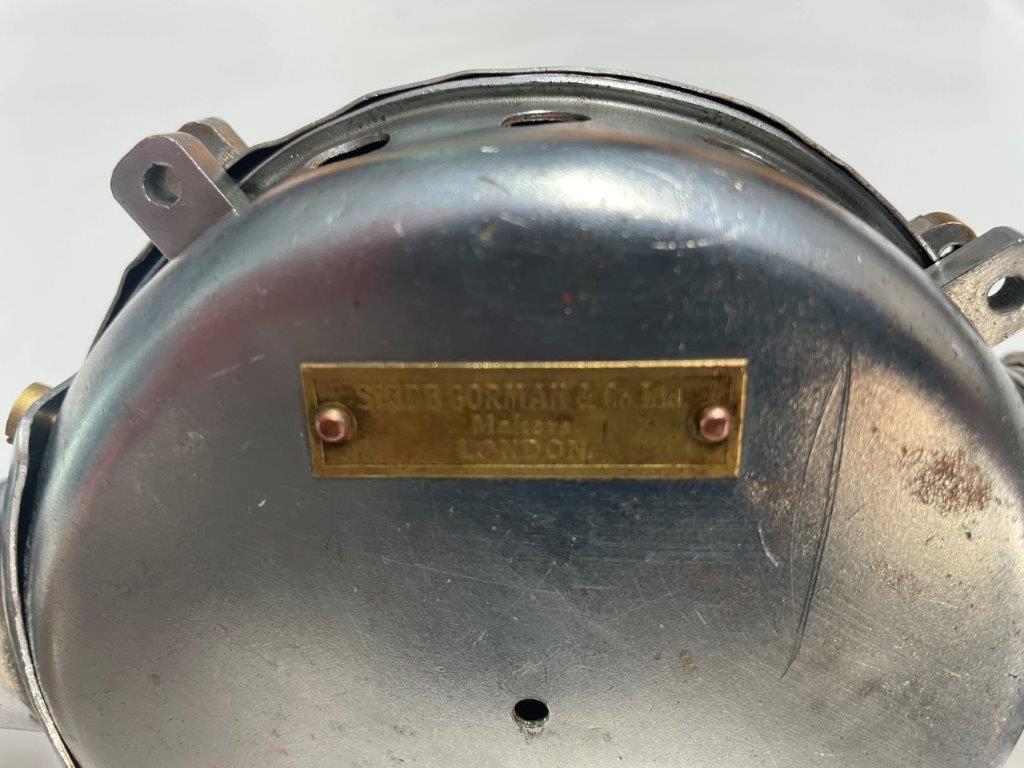 |
| Figure 25 |
Figure 26 |
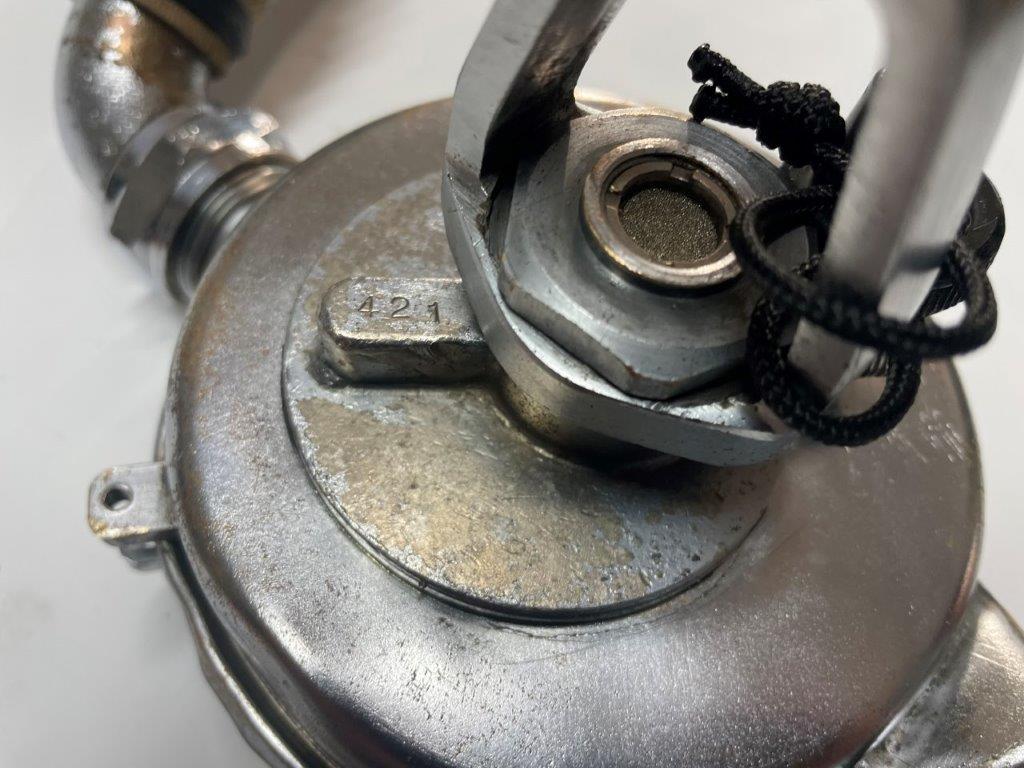 |
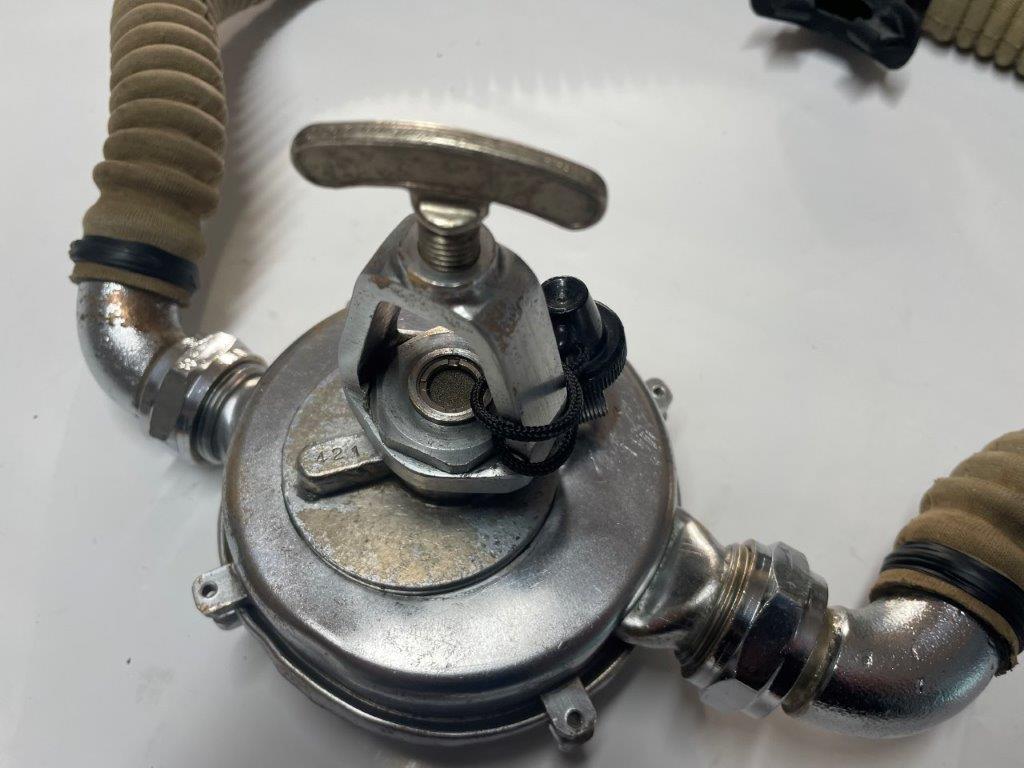 |
| Figure 27 |
Figure 28 |
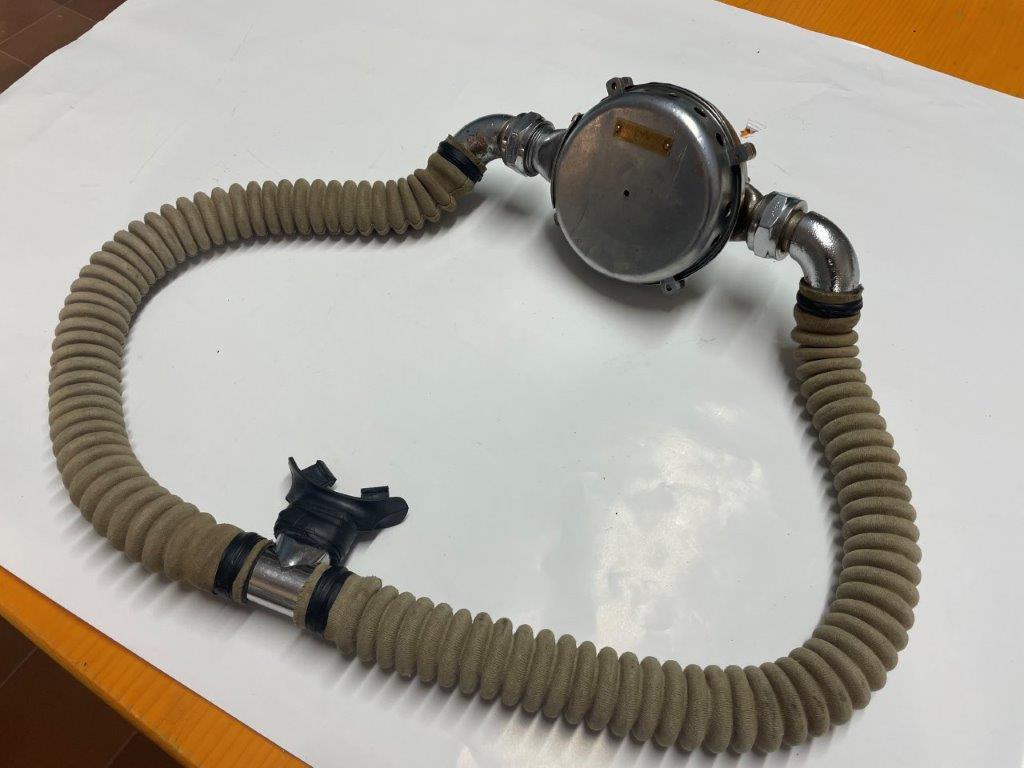 |
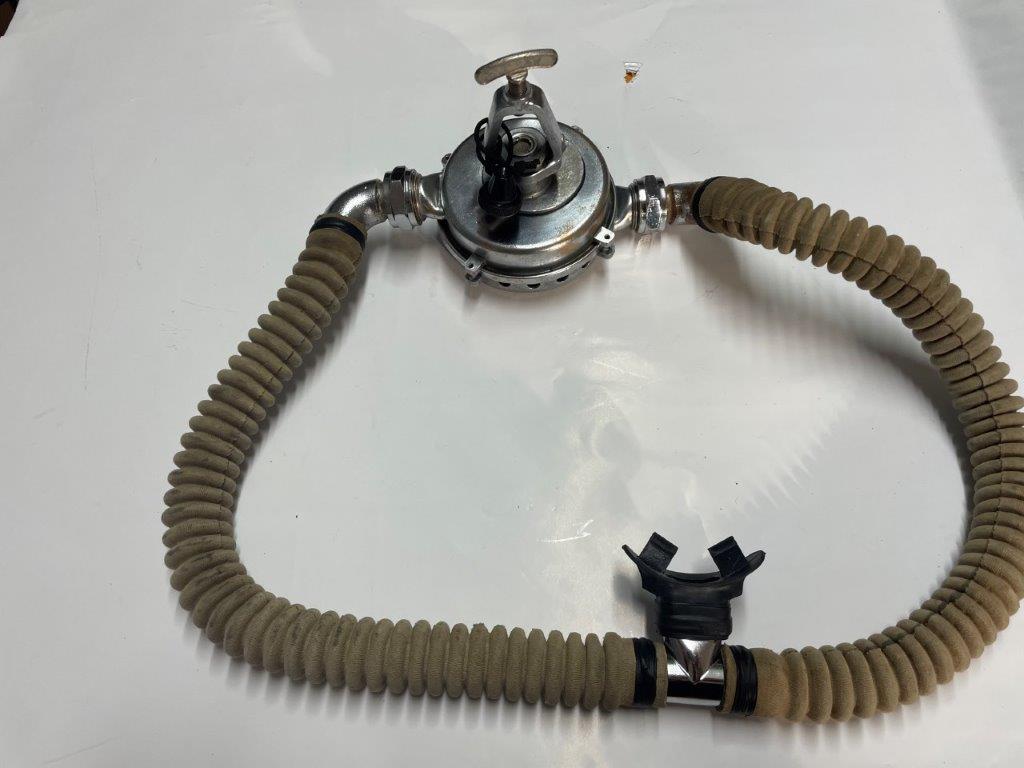 |
| Figure 29 |
Figure 30 |
______________





























